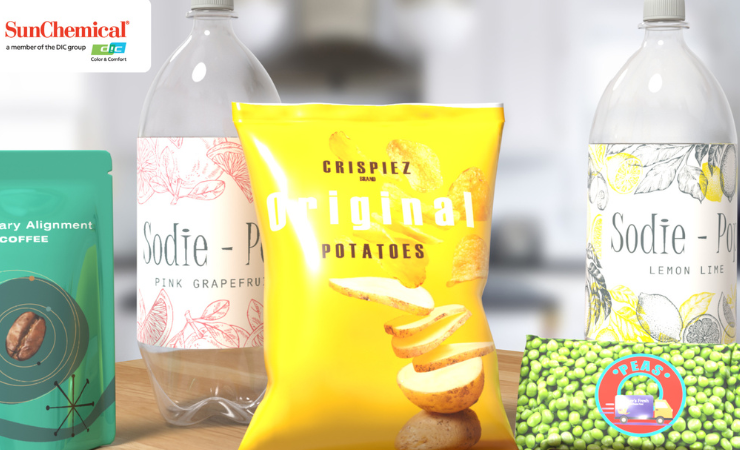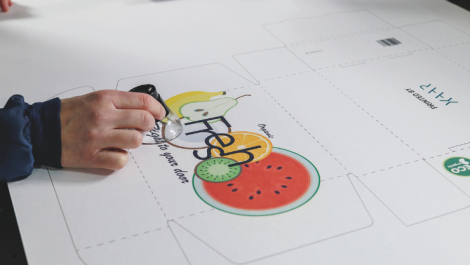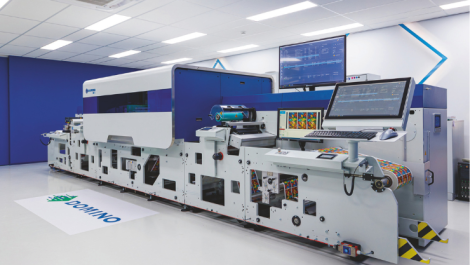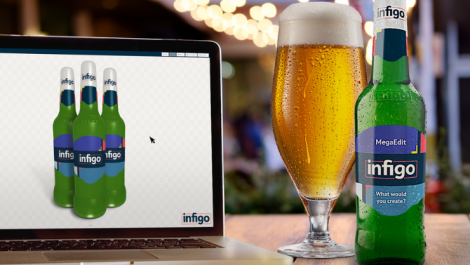The printed ink plays a significant role in packaging functionality, providing information to consumers about the contents of the pack and promoting the packaged product on the shelf. By Michal Lodej
In the label and packaging industry, inks play a crucial role in ensuring that brand owners can meet their design and safety needs. One of the key advantages that inkjet systems like the Gallus One provide is colour vibrancy and accuracy. Modern ink systems offer a wide colour gamut, which ensures that brand owners have access to a diverse range of colours that make their labels and packaging stand out. Many printers require inks which go beyond traditional CMYK (Cyan, Magenta, Yellow, and Black), such as Orange and Violet (O&V) gamut extenders and a high opacity White which helps to achieve more nuanced and vibrant colour schemes.
Another important aspect of inkjet inks is colour repeatability. Brands need accuracy in their designs, ensuring that the same colours are used every time a product is manufactured to maintain the recognisability of the brand. With advanced ink formulations and printing technologies, colour consistency is highly reliable, meaning that the same jobs can be reproduced over and over again without any variation.
From a regulation perspective, the use of low migration inks, such as the Gallus Labelfire 340 Low Migration Inkset, can be of high benefit. The Low Migration inks are formulated to minimise the risk of migration through packaging and rubbing, meeting stringent safety standards. As a result, these inks are increasingly being adopted by customers in various industries.
Stand out performance
Brand owners are looking for packaging that will stand out in a competitive market, with eye-catching labels that are durable enough to stay vibrant throughout the product’s lifespan. Inks play a key role in achieving the colour consistency and wide colour gamut needed to draw consumers’ eyes, as well as closely match brand colours.
Natasha Jeremic, ink development manager, Domino Printing Sciences said: “At Domino, we have ink sets available to suit a wide range of packaging and media, including UV-curable inks for our N-Series label presses, and an aqueous ink set for our X630i corrugated press. Our UV95 and AQ95 inks are Nestlé, EuPIA (European Printing Ink Association), and Swiss Ordinance compliant and manufactured to Good Manufacturing Practices (GMP).
“With sustainability a growing concern and the Packaging and Packaging Waste Regulation (PPWR) now in force, packaging and substrate types and requirements are evolving. When dealing with new packaging materials, packaging designers and ink developers face the dual challenge of protecting the functionality and promotional value of packaging while maintaining consumer safety. While brands would like to embrace new PPWR-compliant substrates, such as multi-layered mono-material films, these could present a challenge to converters, as their permeability and ink adhesion properties will differ from current materials.
“Ink performance is heavily substrate-dependent; an ink performing well on one substrate will not necessarily produce the same print quality, durability, and colour intensity on another. When dealing with new substrates, ink developers may need to consider new functional coatings, ink formulations, and primers to ensure ink performance.
“UV inks deliver excellent results in terms of durability and vibrancy at high running speeds without the need for lamination. UV inks are typically well-suited for printing on non-porous media, including substrates such as PET films, coated and non-coated polyolefins, and a wide range of paper media, and benefit from fast, cost-effective curing. Aqueous inks work well on semi-porous materials such as corrugated boards, offering enhanced recyclability.
“As a printing press supplier that also develops and manufactures inks in-house, Domino anticipates the need for more development work to help brand owners balance PPWR requirements and design ambitions. This will include work to ensure great printing results on new substrates for both labels and corrugated packaging and eliminating hazardous substances on EuPIA’s Exclusion List to ensure they don’t enter the recycling stream, contaminating the recyclate and affecting consumer safety.”






